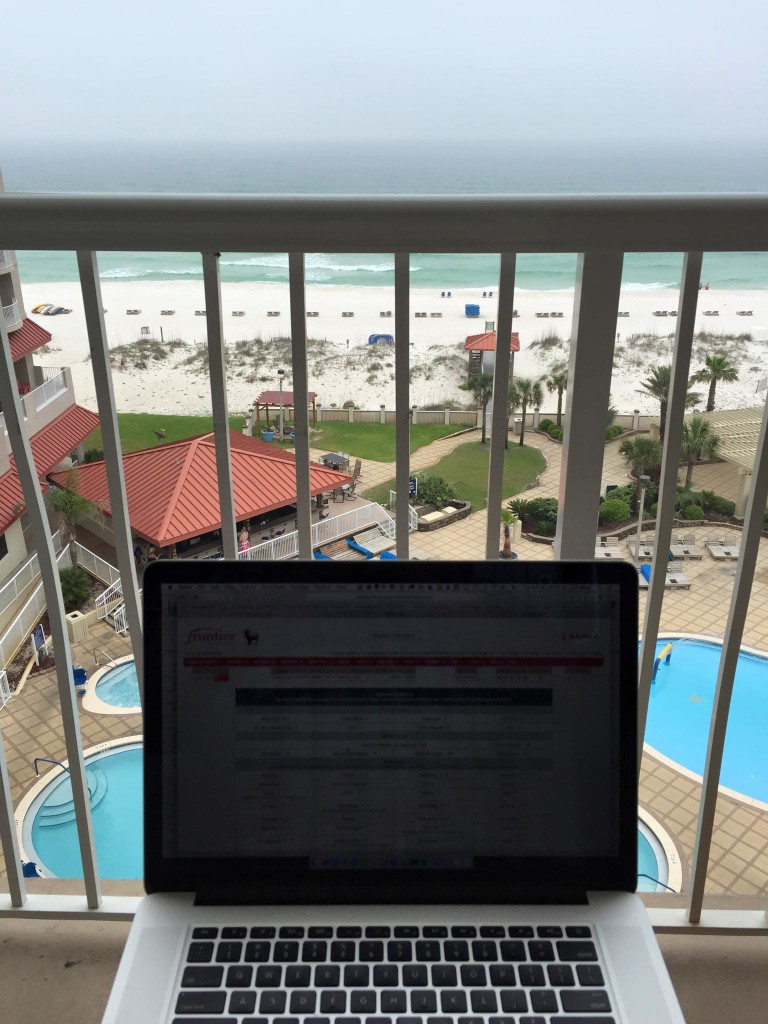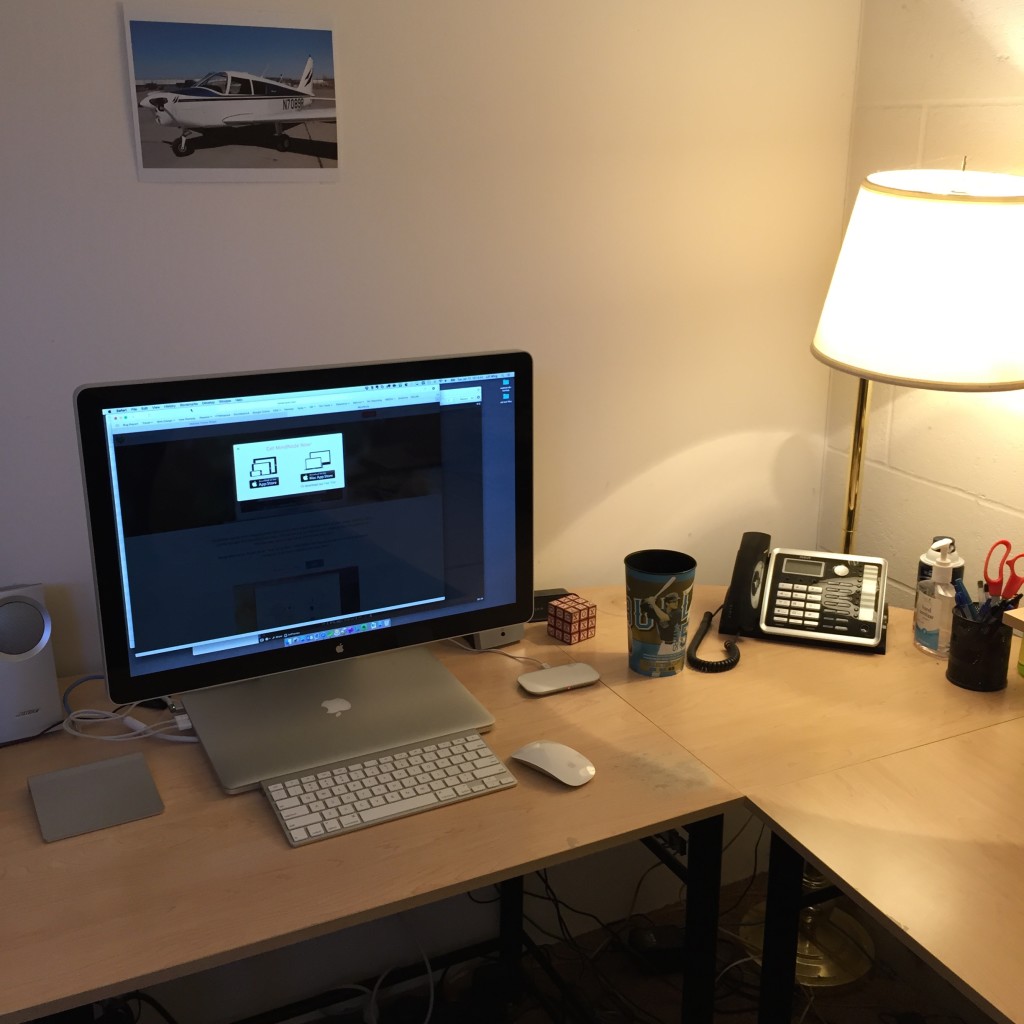I have mentioned in the last few blog posts that Earl and I are in Pensacola Beach, Florida this week. I have been living the life of a “digital nomad”, something that I have always wanted to be able to do with my career. It’s not something that I can do all the time, but every once in a while it’s nice to be able to work with a change of scenery.
For those stumbling upon this entry via Google, a quick background of what I do for a living: I work for a large, national telecommunications company in the Engineering Development Services group as a Senior Software Engineer. I spend 90% of my day writing code. The company I work for allows many of us to work remotely. The gig pays well, has decent benefits and working remotely is ideal for me. I love it. When I interviewed with this company in 2010, I declared that I hoped it would be my last job interview. I still believe this to be the case.
I thought I’d share what I do as a digital nomad and how I assure that I will be able to remain productive and connected to work even though I could be working anywhere. Much of this is at my own expense, and quite frankly, it’s worth it.
1. When I was given a company smartphone (a Samsung Galaxy SIII), I made sure they included data sharing in the data plan. My smartphone is on AT&T. I rarely use my phone for anything because as an Apple guy, I can’t stand using whatever Samsung has done to SIII.
2. I make sure that I always have a minimum of two but preferably three ways to connect to the Internet at any given time. This involves any hotel or restaurant wi-fi connection, the aforementioned data plan on my company smartphone and my personal iPad on Verizon, which comes with data sharing as well. Public WiFi can be wonky quite often, but I’ve found my Verizon LTE on my iPad to be rock solid 90% of the time. Often if I don’t have Verizon coverage, I can fall back on the AT&T connection.
3. Though it’s a pain at airport security, I carry both my personal and work MacBooks and use each computer as appropriate. However, if my work MacBook should fail for any reason, I can still connect using my personal computer or my iPad and Remote Desktop to my standard issue PC in the cubicle back at home.
4. I have two Dropbox accounts, one for work and one for personal use. I store all of my code for work on Dropbox, so I can get to it anywhere. I also share my coding folder from my work Dropbox to my personal Dropbox, so I can also get to it there if I have to fall back to my personal MacBook. In an absolutely paranoid move, I also have an old Pentium 4 PC back home that I can get to via an SSH connection. I have this computer also syncing with Dropbox, so as a very last resort my files are always somewhere.
5. I use Google Voice for my work cell phone number and then forward calls to whatever device I am carrying. Calls are normally forwarded to my personal iPhone because of my dislike of the company Samsung. I normally make my work calls using my personal phone. I used to use Skype for everything, but lately Skype has been dropping landline calls like crazy so I’ve been sticking with cell service and I have no regrets with my decision. In my home office I have a VoIP line that I pay $9.95 a month for through a company called PhonePower. Their service has been outstanding.
6. I carry at least two pairs of headphones with me because others shouldn’t have to hear my calls. I hate Bluetooth fobs hanging in my ear, I do all my conference calls on standard issue Apple headphones that come with iPhones.
7. I tend to thrive in ambient noise environments, but if I find myself being distracted, I listen to instrumental music of varying variety when I write code. A favorite selection is “Music To Code By” by Carl Franklin. I also have a set playlist of a few songs that I listen to at the beginning of every workday, it’s my way of telling my brain, “OK, it’s time to work.” I used to have videos playing when I worked but I find them too distracting.
8. Luckily, the company I work for has company wide instant messaging through Microsoft Lync. I use this to stay connected with coworkers and the like but I’m not afraid to use the “busy” or “do not disturb” status. I make a point of blocking out an hour in the morning as “productivity time” and an hour for lunch each day on my calendar. The morning block allows me to plan my day and weed through email and the lunch block keeps me sane.
With a little forethought and planning, and the right job, becoming a Digital Nomad is a dream come true for me. I love what I do, I like who I work for and I like that I have flexibility to experience changes of scenery when my schedule allows for it. It helps keep life awesome.




